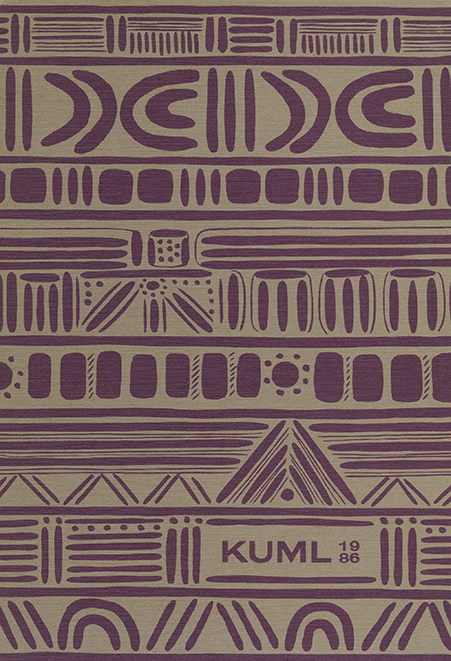Where was Viking Age Ribe?
DOI:
https://doi.org/10.7146/kuml.v34i34.109806Keywords:
viking age, ribe, marketAbstract
Where was Viking Age Ribe?
A contribution to Ribe's 8th-12th century topography
The article attempts to elucidate Ribe's earliest topography, by means of both new and old finds.
The latest excavation of Ribe's oldest culture-layers occurred in 1986 at Nicolajgade 8. It revealed an 8th century market site. Characteristic of the site is that different craftsmen occupied the same spot time after time. This was manifested in workshop deposits, which are thickest around the fireplaces, thinner at the sides, where natural trenches tended to form (Fig. 2). The diagrammatic profile Fig. 3 shows a section through the excavation. The subsoil is marked U. The village stage (L), the bottom culture-layer, contained no workshop waste or imported wares and must therefore derive from an agrarian settlement. Workshop horizons (VH 1-6) are up to 1 m thick culture-layers consisting of workshop floors, fireplaces, levelled areas, etc. The finds (Fig. 4 and 5) date the workshops from some time in the 8th century to c. 800. The most recent trench (G2) was filled at the beginning of the 9th century. For a brief period (VH2), there is no trench between the workshop areas VH 1-6 and VHa. The earliest trench course was respected by a layer of turves filling a depression - doubtless part of the preparation of the spot for a market. The area has thus been planned from the outset and divided into plots about 8 m wide, but as the deposits gradually grew, the trench grew wider and the available working area smaller. The trenches were possibly filled in connection with reorganization. The entire area was dug away (A) in historical times.
In 1973-76, major excavation campaigns were carried out in almost the same area (Fig. 1:4-5). With a view to discovering a parcelling out of the area like that at Nicolajgade 8, the principal profiles from the earlier excavations (Fig. 7) have been studied. Here the same rhythm is clearly seen in the deposits. This means that the plots had an extent of at least 50 m. A series of bore-probes has moreover demonstrated workshop layers over a stretch of at least 150 m along the river bank. In Dommerhaven (Fig. 1:4), the deposits were of a different kind than at Nicolajgade 8 and Kunstmuseet (Fig. 1:5-6), in containing a great deal of cattle manure. Find analyses show that the different areas were in use simultaneously. If Nicolajgade already existed then, its course would have marked the boundary between the market in front and the cattle market with its folds and perhaps stables at the back.
The planning and organization which marks the establishment of the market must mean that a powerful body was behind it. That royal power was strong at this very time in Denmark is shown by other major construction works, such as the Kanhave Canal on Samsø, and Danevirke.
Ribe flourished through the 8th century, but around 800 the finds begin to be wanting. On the north side of the river, the most recent layers and the content of various excavations and casual finds is undoubtedly from the Viking Age. In addition, some secondarily deposited Viking pottery has been found in the fill of some medieval graves near the longvanished St. Nicholas' Church (Fig. 1:3 and 9). That the finds from the Viking Age are so rare can be explained in several ways. Either the Viking Age layers were removed in connection with the establishment of the mill damm in the 13th century or perhaps Ribe was transformed in connection with the decline of Dorestad in the 9th century (an important trading partner disappeared here). At this juncture, Hedeby arose, and possibly ousted Ribe as a centre of commerce. The written sources seem to attest, however, that in the ecclesiastical world at least, Ribe was still important. Ribe's importance, politically as well as commercially, has been under constant change.
Lene B. Frandsen og Stig Jensen
Downloads
Published
How to Cite
Issue
Section
License
Fra og med årgang 2022 er artikler udgivet i Kuml med en licens fra Creative Commons (CC BY-NC-SA 4.0).
Alle tidligere årgange af tidsskriftet er ikke udgivet med en licens fra Creative Commons.


